Feasibility Conditions for Demonstrative Peer-to-Peer Energy Market
Abstract
:1. Introduction
2. Overview of the Demonstration Project
2.1. Location of the Demonstration Project
2.2. Demonstration Project System
3. Analysis of Traded Data
3.1. Selection of Target Period
3.2. Analysis of Executed Volumes and Prices in the Target Period
3.2.1. Executed Volume Shares among Each Agent
3.2.2. Executed Volumes and Prices Associated with Electricity Delivery Time Intervals
3.2.3. Executed Volumes and Prices Associated with the Durations of Electricity Delivery
3.3. Analysis of Order Volumes and Prices during the Target Period
3.3.1. Order Volumes and Prices for Electricity Delivery
3.3.2. Order Volume and Price as Compared with Electricity Delivery Duration
3.3.3. Relation between Order Volumes/Prices and State-of-Charge (SoC) of Battery Storages
3.4. Chronological Analysis of Unexecuted/Uncancelled Volumes and Prices
4. Discussion
4.1. Principal Findings
- Since the main power source for the supply participants (expect grid) in the P2P electricity market is solar power, offer volumes tended to increase predominantly during the day (Figure 10). Therefore, the demand participants, such as the CSs and residences, probably expected to procure electricity at a lower price during the daytime. However, the residences were more successful in purchasing electricity at reasonable prices than CSs. Moreover, the order prices bid by the residences were lower than those bid by the CSs, regardless of the time intervals of electricity delivery (Figure 11). In the daytime, most of the volumes purchased by the residences were supplied by the PVGs (Figure 5), and the mean prices purchased by the residences were lower than those purchased by the CSs (Figure 7).
- The residences appeared to continue executing more advantageous prices than the PVGs and CSs with the onset of the electricity delivery time. Moreover, the mean prices supplied by the residences were higher than those supplied by the PVGs, while the mean prices purchased by the residences were lower than those purchased by the CSs when the time of electricity delivery approached (Figure 9).
- Even though the holding storages were advantageous, a lower SoC induced higher bidding prices, that is, the decline in flexibility resulted in disadvantageous conditions (Figure 16).
4.2. Limitations
4.3. Recommendations for Future Research
4.4. Implications
4.5. Summary
Author Contributions
Funding
Acknowledgments
Conflicts of Interest
References
- IPCC, Intergovernmental Panel on Climate Change. Headline Statements from the Summary for Policymakers. In Climate Change 2021: The Physical Science Basis, the Working Group I Contribution to the Sixth Assessment Report; IPCC: Geneva, Switzerland, 2021; Available online: https://www.ipcc.ch/report/ar6/wg1/downloads/report/IPCC_AR6_WGI_Headline_Statements.pdf (accessed on 15 August 2021).
- IEA, International Energy Agency. Net Zero by 2050. Available online: https://www.iea.org/reports/net-zero-by-2050 (accessed on 15 August 2021).
- CAISO, California Independent System Operator. Fast facts: What the Duck Curve Tells us about Managing a Green Grid. Available online: https://www.caiso.com/documents/flexibleresourceshelprenewables_fastfacts.pdf (accessed on 15 August 2021).
- Matsuo, Y.; Endo, S.; Nagatomi, Y.; Shibata, Y.; Komiyama, R.; Fujii, Y. Investigating the economics of the power sector under high penetration of variable renewable energies. Appl. Energy 2020, 267, 113956. [Google Scholar] [CrossRef]
- Ogimoto, K.; Wani, H. Making Renewables Work: Operational Practices and Future Challenges for Renewable Energy as a Major Power Source in Japan. IEEE Power Energy Mag. 2020, 18, 47–63. [Google Scholar] [CrossRef]
- Ahl, A.; Yarime, M.; Goto, M.; Chopra, S.S.; Kumar, N.M.; Tanaka, K.; Sagawa, D. Exploring blockchain for the energy transition: Opportunities and challenges based on a case study in Japan. Renew. Sustain. Energy Rev. 2020, 117, 109488. [Google Scholar] [CrossRef]
- IRENA, International Renewable Energy Agency. Innovation Landscape Brief: Peer-to-Peer Electricity Trading. Available online: https://irena.org/-/media/Files/IRENA/Agency/Publication/2020/Jul/IRENA_Peer-to-peer_trading_2020.pdf (accessed on 15 August 2021).
- Tushar, W.; Saha, T.K.; Yuen, C.; Smith, D.; Poor, H.V. Peer-to-peer trading in electricity networks: An overview. IEEE Trans. Smart Grid 2020, 11, 3185–3200. [Google Scholar] [CrossRef] [Green Version]
- RWE AG. Press Release (1 July 2020): RWE Closes Deal with E.ON. Available online: https://jp.rwe.com/en/press/2020-07-01-rwe-closes-deal-with-eon (accessed on 1 September 2021).
- Tokyo Electric Power Company Holdings, Incorporated. Press Release (10 July 2017): Launching a Direct Power Trading Platform Business in Cooperation with Germany’s Leading Power Company Innogy Leveraging Advanced IT to Develop Power Trading Business in Germany. Available online: https://www.tepco.co.jp/press/release/2017/1443908_8706.html (accessed on 1 September 2021). (In Japanese).
- Chugoku Electric Power Company, Incorporated. Press Release (25 April 2019): Implementation of a Demonstration Test on Electricity Flexibility Using Blockchain Technology. Available online: https://www.energia.co.jp/press/2019/11766.html (accessed on 1 September 2021). (In Japanese).
- Tohoku Electric Power Company, Incorporated. Press Release (26 April 2019): Conclusion of Contract for Joint Research on Direct Power Trading Using Distributed Power Sources (P2P Power Trading). Available online: https://www.tohoku-epco.co.jp/pastnews/normal/1201039_1049.html (accessed on 1 September 2021). (In Japanese).
- Kansai Electric Power Company, Incorporated. Press Release (9 December 2019): Commencement of a Demonstration Study of Environmental Value Trading Using Blockchain Technology by Power Ledger Australia. Available online: https://www.kepco.co.jp/corporate/pr/2019/1209_1j.html (accessed on 1 September 2021). (In Japanese).
- Shikoku Electric Power Company, Incorporated. Press Release (12 March 2021): Investment in U.S. Venture Company LO3 Energy. Available online: https://www.yonden.co.jp/press/2020/__icsFiles/afieldfile/2021/03/12/pr002.pdf (accessed on 1 September 2021). (In Japanese).
- ENERES Company, Limited. Press Release (4 December 2020): Launch of a Demonstration Project to Build a P2P Power Trading Platform for Next-Generation Power Systems—Issuing Blockchain-Based Environmental Value Tokens to Examine a New Renewable Energy Trading Scheme for RE100 Companies. Available online: https://www.eneres.co.jp/news/release/20201204.html (accessed on 1 September 2021). (In Japanese).
- UPDATER, Incorporated. Press Release (29 June 2021): Launching Sales of P2P Power Tracking System to Other Companies, Enabling the Designation of Power Plants When Purchasing Power—We Aim to Spread the Use of Origin-Guaranteed Renewable Energy with our SaaS. Available online: https://minden.co.jp/news/2021/06/29/4456 (accessed on 1 September 2021). (In Japanese).
- Hitachi, Limited. Press Release (22 January 2021): Development of a System to Visualize the Use of Renewable Energy for Each Facility and Service for the Realization of a Decarbonized Society—Operation of a System to Certify the Use of 100% Renewable energy as Powered by Renewable Energy Started. Available online: https://www.hitachi.co.jp/New/cnews/month/2021/01/0122.html (accessed on 1 September 2021). (In Japanese).
- Hitachi, Limited. Powered by Renewable Energy. Available online: https://www.powered-by-re.com/ (accessed on 1 September 2021). (In Japanese).
- Nakamura, Y.; Zhang, Y.; Sasabe, M.; Kasahara, S. Exploiting smart contracts for capability-based access control in the internet of things. Sensors 2020, 6, 1793. [Google Scholar] [CrossRef] [PubMed] [Green Version]
- Tokyo Institute of Technology. Press Release (18 January 2021): Development of Blockchain Technology to Optimize P2P Electricity Trading According to the Trading Needs of Consumers—Contributing to the Effective Use of Surplus Electricity by Realizing a Flexible Trading Environment. Available online: https://www.titech.ac.jp/news/2021/048738 (accessed on 1 September 2021). (In Japanese).
- Nagatsuka, T.; Sano, M.; Yamaguchi, N. Decentralized Transaction System of Surplus PV Output Using Blockchain. In Proceedings of the Grand Renewable Energy Proceedings Japan council for Renewable Energy (2018), Yokohama, Japan, 20–22 June 2018; Japan Council for Renewable Energy: Tokyo, Japan, 2018; p. 304. [Google Scholar] [CrossRef]
- Brooklyn Microgrid. Available online: https://www.brooklyn.energy/ (accessed on 1 September 2021).
- LO3 Energy, Incorporated. Available online: https://lo3energy.com/ (accessed on 1 September 2021).
- Werth, A.; Kitamura, N.; Tanaka, K. Conceptual Study for Open Energy Systems: Distributed Energy Network Using Interconnected DC Nano Grids. IEEE Trans. Smart Grid 2015, 6, 1621–1630. [Google Scholar] [CrossRef]
- Sony Computer Science Laboratories, Incorporated. Press Release (1 December 2020): Microgrid System Core Module (Power-Interchange Management Software) Going Open Source—Promote Locally Produced & Consumed Renewable Energy, Work towards a Sustainable Society. Available online: https://www.sonycsl.co.jp/press/prs20201201/ (accessed on 1 September 2021).
- Chubu Electric Power Company, Incorporated. Press Release (1 March 2018): Implementation of a Demonstration Experiment for a New Service for Recharging Electric Vehicles and Other Vehicles Using Blockchain. Available online: https://www.chuden.co.jp/publicity/press/3267230_21432.html (accessed on 1 September 2021). (In Japanese).
- Kansai Electric Power Company, Incorporated. Press Release (9 December 2019): Launch of a Demonstration Project on Environmental Value Trading Using Blockchain Technology, Including the Determination of Trading Prices for Environmental Values. Available online: https://www.kepco.co.jp/corporate/pr/2019/1209_2j.html (accessed on 1 September 2021). (In Japanese).
- Toyota Motor Corporation. Press Release (13 November 2020): Joint Demonstration Experiment on P2P Power Trading System Confirms Its Effectiveness—Exploring Further Partner Collaboration to Provide New Value. Available online: https://www.toyota.co.jp/jpn/tech/partner_robot/news/20201113_01.html (accessed on 1 September 2021). (In Japanese).
- Ministry of the Environment. Brief summary: Digital grid router (DGR) and Power Interchange Settlement System to Accelerate the Introduction of Renewable Energy. Available online: http://www.env.go.jp/earth/ondanka/cpttv_funds/pdf/db/202.pdf (accessed on 15 August 2021). (In Japanese)
- Ministry of the Environment. Low Carbon Technology Research, Development and Demonstration Program. Available online: https://www.env.go.jp/earth/ondanka/cpttv_funds/pdf/pamph_e2019.pdf (accessed on 15 August 2021).
- Wencong, S.; Huang, A. (Eds.) The Energy Internet: An Open Energy Platform to Transform Legacy Power Systems into Open Innovation and Global Economic Engines; Woodhead Publishing: Cambridge, UK, 2018; pp. 241–264. [Google Scholar] [CrossRef]
- Tanaka, K.; Abe, R.; Nguyen-Van, T.; Yamazaki, Y.; Kamitamari, T.; Sako, K.; Koide, T. A Proposal on an Electricity Trading Platform Using Blockchain. In Transdisciplinary Engineering Methods for Social Innovation of Industry 4.0; IOS Press: Amsterdam, The Netherlands, 2018; pp. 976–983. [Google Scholar] [CrossRef]
- Abe, R.; Taoka, H.; McQuilkin, D. Digital grid: Communicative electrical grids of the future. IEEE Trans. Smart Grid 2011, 2, 399–410. [Google Scholar] [CrossRef]
- Nguyen-Van, T.; Abe, R.; Tanaka, K. Digital Adaptive Hysteresis Current Control for Multi-Functional Inverters. Energies 2018, 11, 2422. [Google Scholar] [CrossRef] [Green Version]
- Hayashi, K.; Kato, R.; Torii, R.; Taoka, H.; Abe, R. Bi-directional power flow through a digital grid router. J. Int. Counc. Electr. Eng. 2015, 5, 42–46. [Google Scholar] [CrossRef]
- Shibano, K.; Kontani, R.; Hirai, H.; Hasegawa, M.; Aihara, K.; Taoka, H.; McQuilkin, D.; Abe, R. A Linear programming formulation for routing asynchronous power systems of the Digital Grid. Eur. Phys. J. Spec. Top. 2014, 223, 2611–2620. [Google Scholar] [CrossRef]
- Kumagaya Meteorological Office. Characteristics of the Climate in Saitama. Available online: https://www.jma-net.go.jp/kumagaya/shosai/chishiki/tokutyou.html (accessed on 15 August 2021). (In Japanese).
- Japan Meteorological Agency. Historical Weather Observations. Available online: https://www.data.jma.go.jp/obd/stats/etrn/index.php?prec_no=43&block_no=0363 (accessed on 15 August 2021). (In Japanese)
- Japan Meteorological Agency. Frequently Asked Questions about Humidity, Barometric Pressure, and Daylight Duration. Available online: https://www.jma.go.jp/jma/kishou/know/faq/faq5.html (accessed on 15 August 2021). (In Japanese)
- TEPCO Power Grid, Incorporated. Available online: https://www.tepco.co.jp/pg/ (accessed on 15 August 2021). (In Japanese).
- Digital Grid, Corporation. Available online: https://www.digitalgrid.com/ (accessed on 15 August 2021). (In Japanese).
- ECHONET Consortium. Digital Grid Controller|ECHONET. Available online: https://echonet.jp/introduce_en/qz-000069/ (accessed on 15 September 2021). (In Japanese).
- JEPX, Japan Electric Power Exchange. Available online: http://www.jepx.org/ (accessed on 15 August 2021). (In Japanese).
- McKinney, W. Data structures for statistical computing in python. In Proceedings of the 9th Python in Science Conference, Austin, TX, USA, 28 June–3 July 2010; Volume 445, p. 51. [Google Scholar]

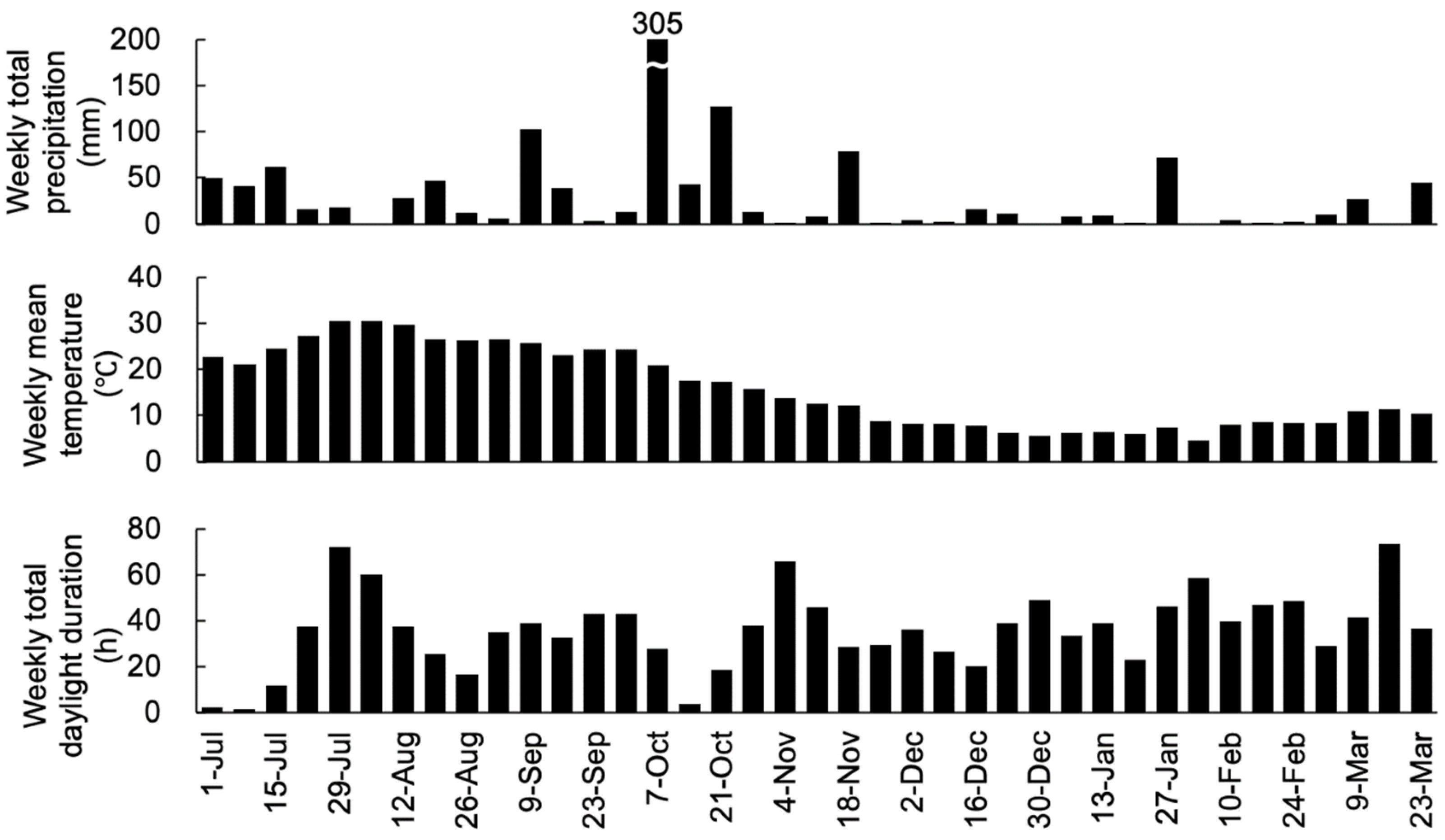


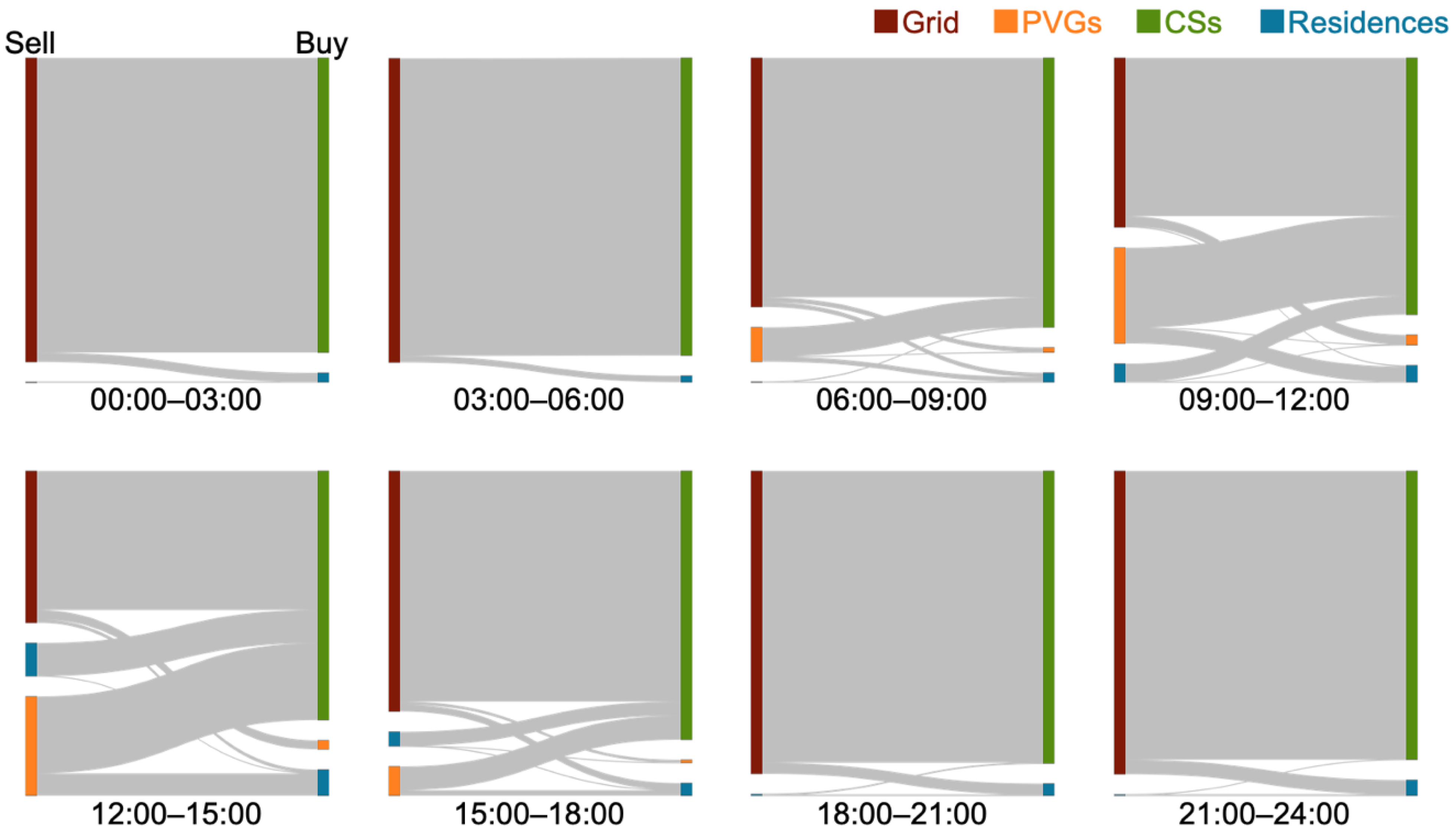
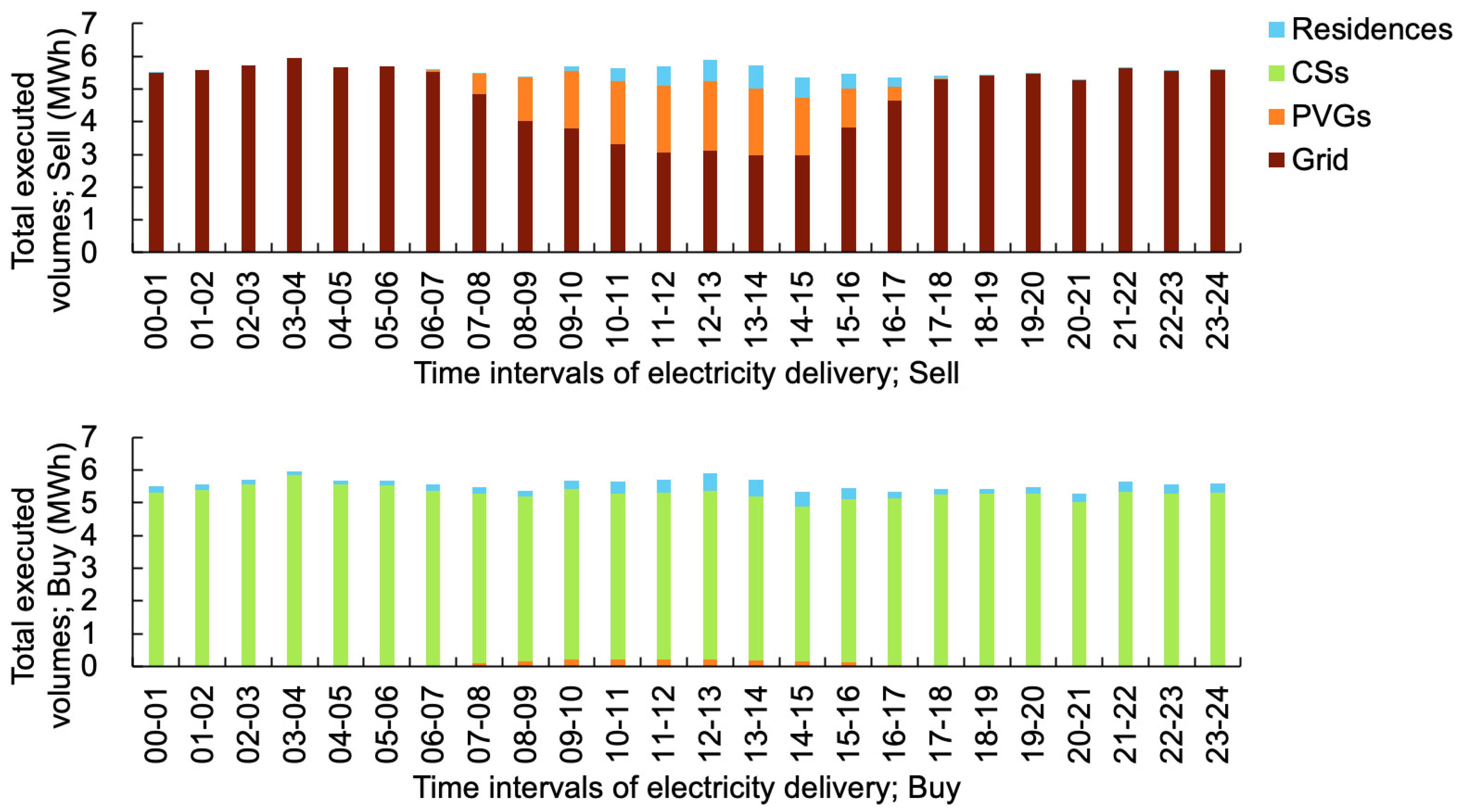


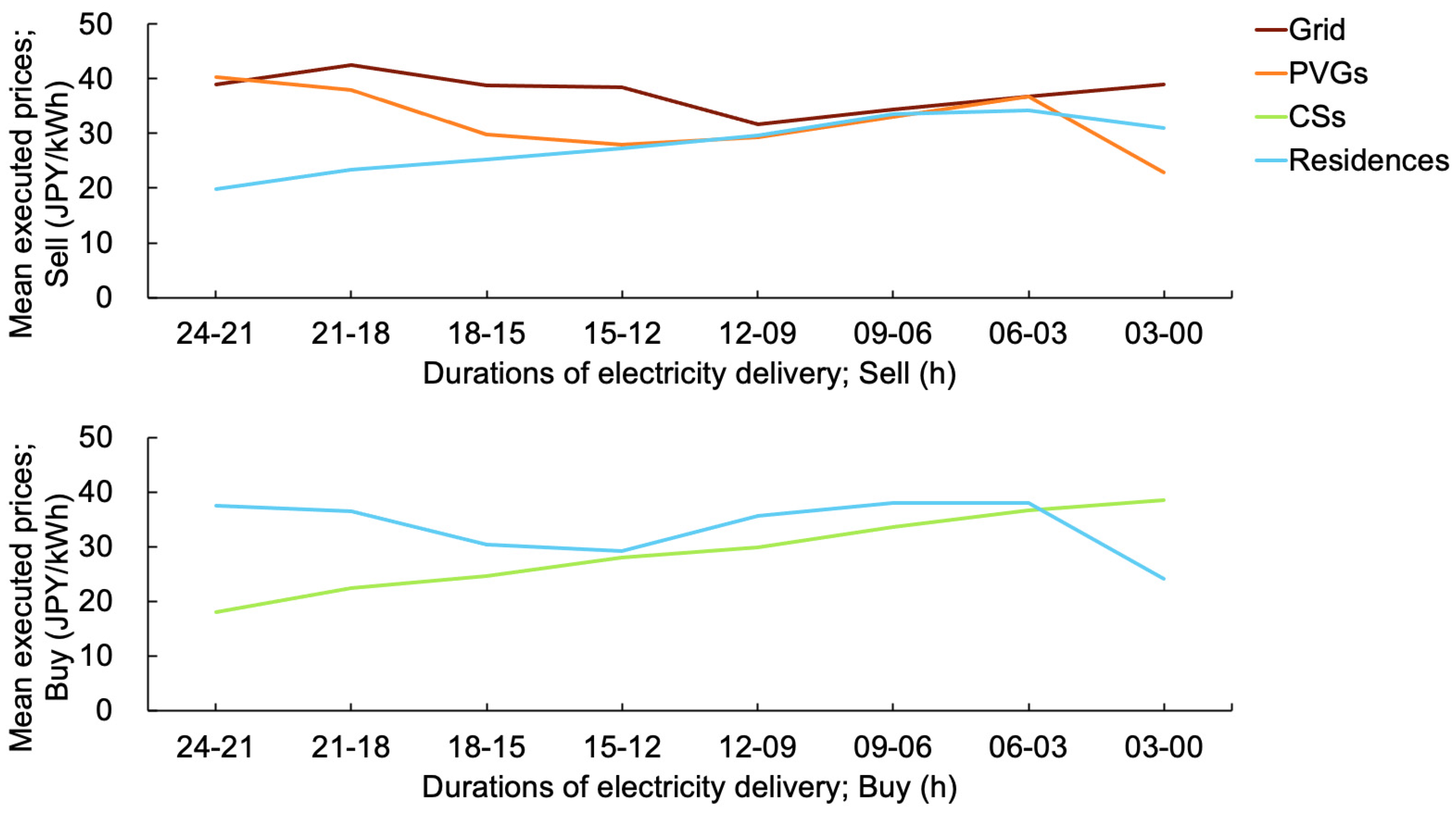
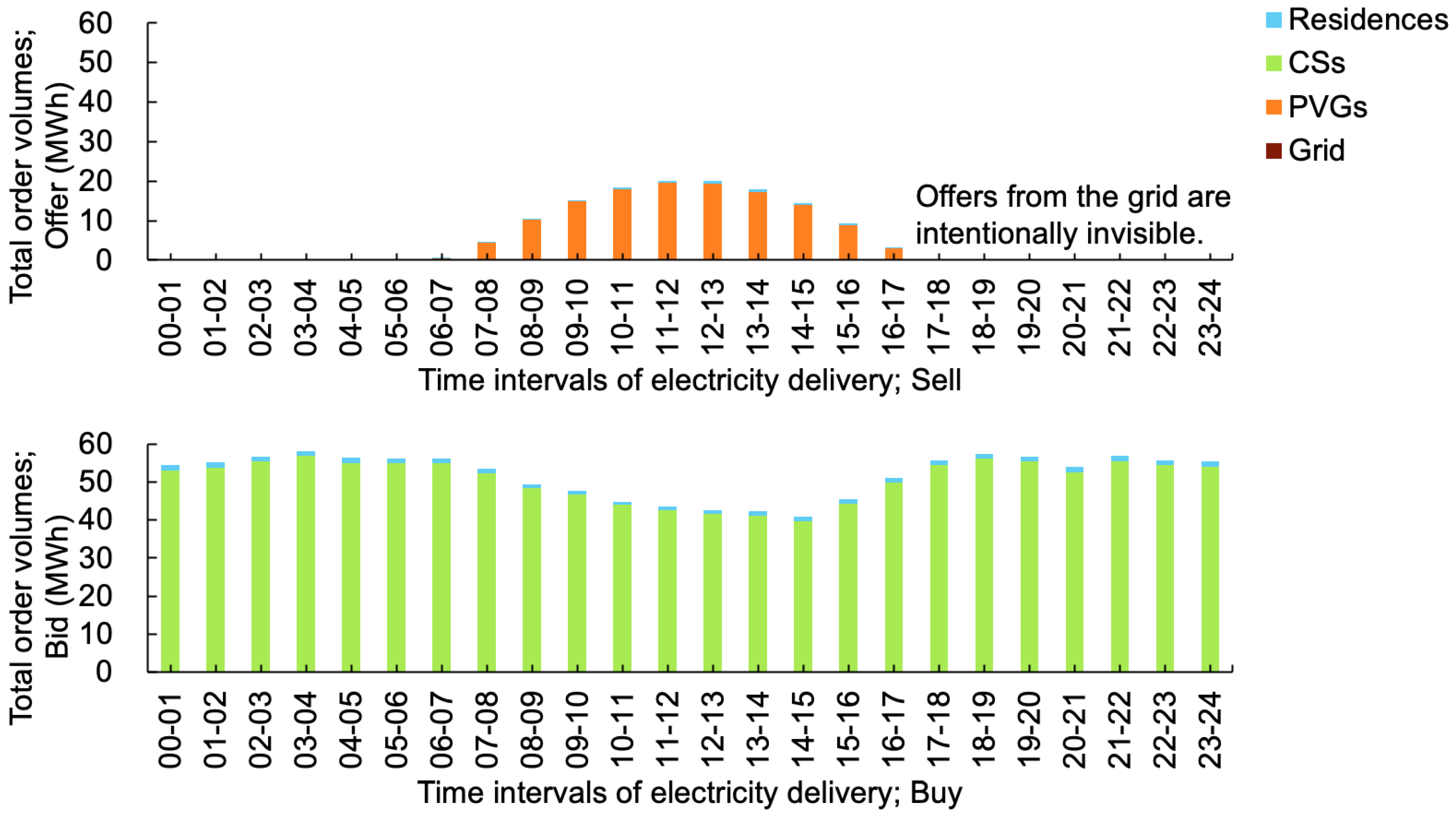

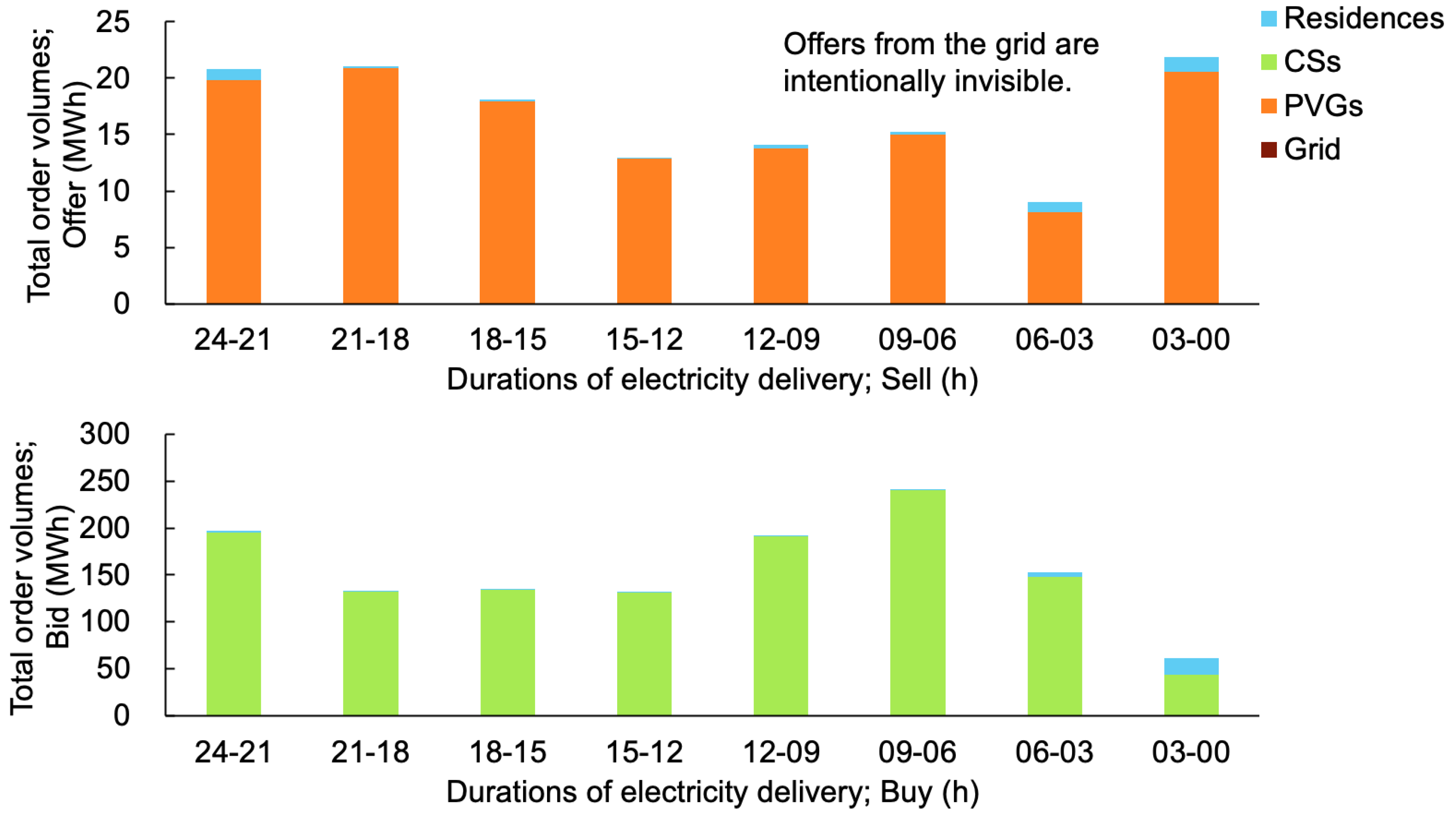
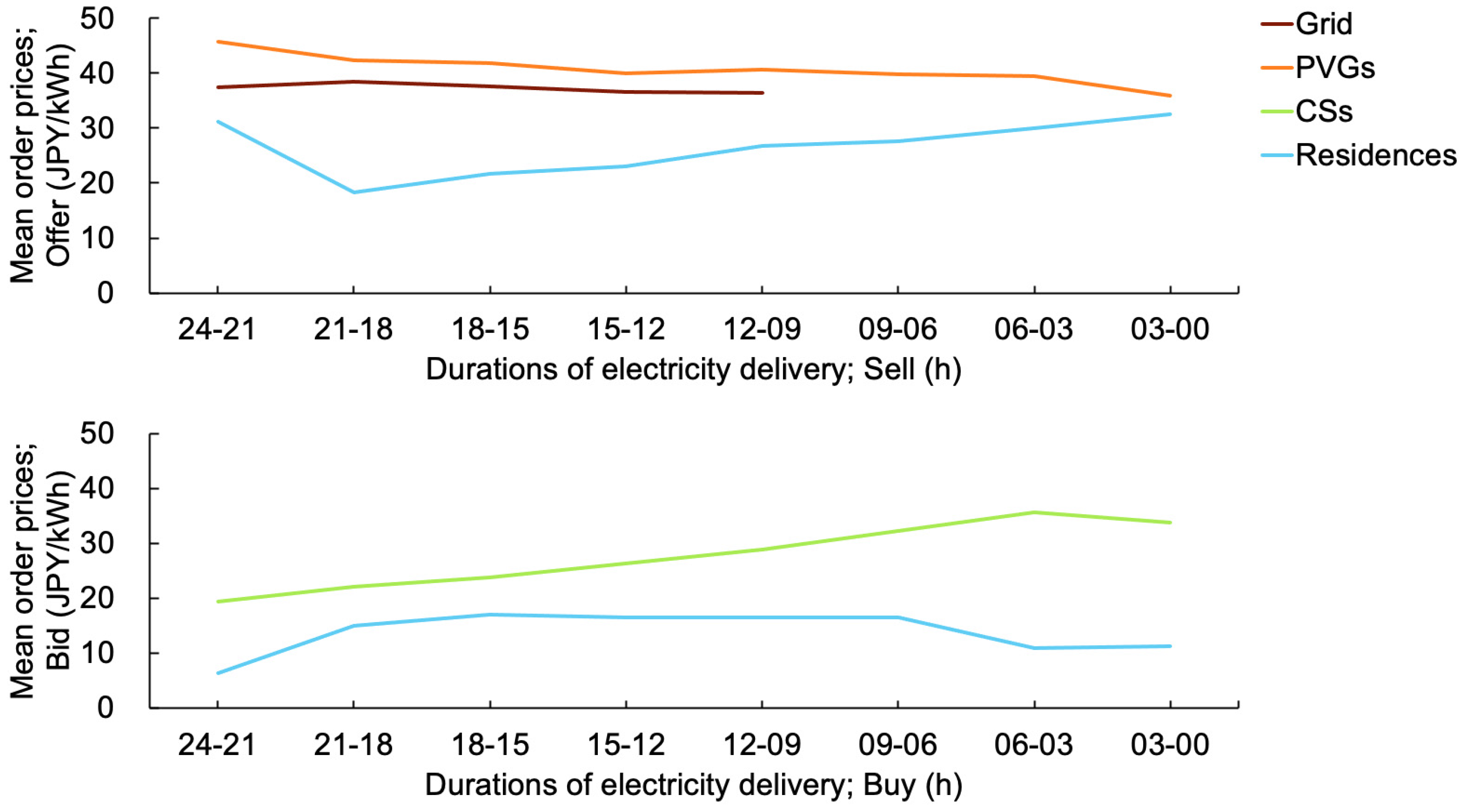

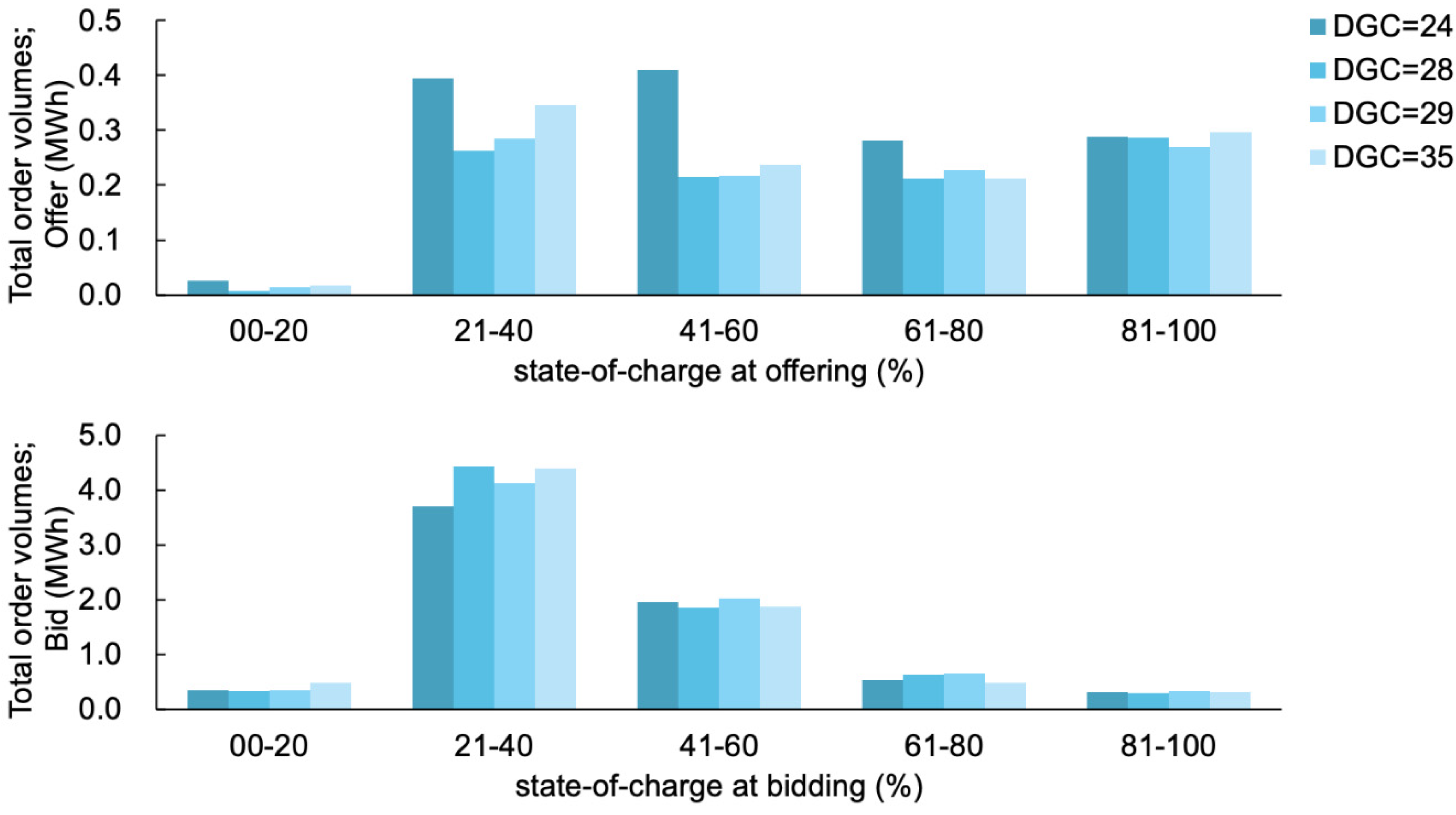
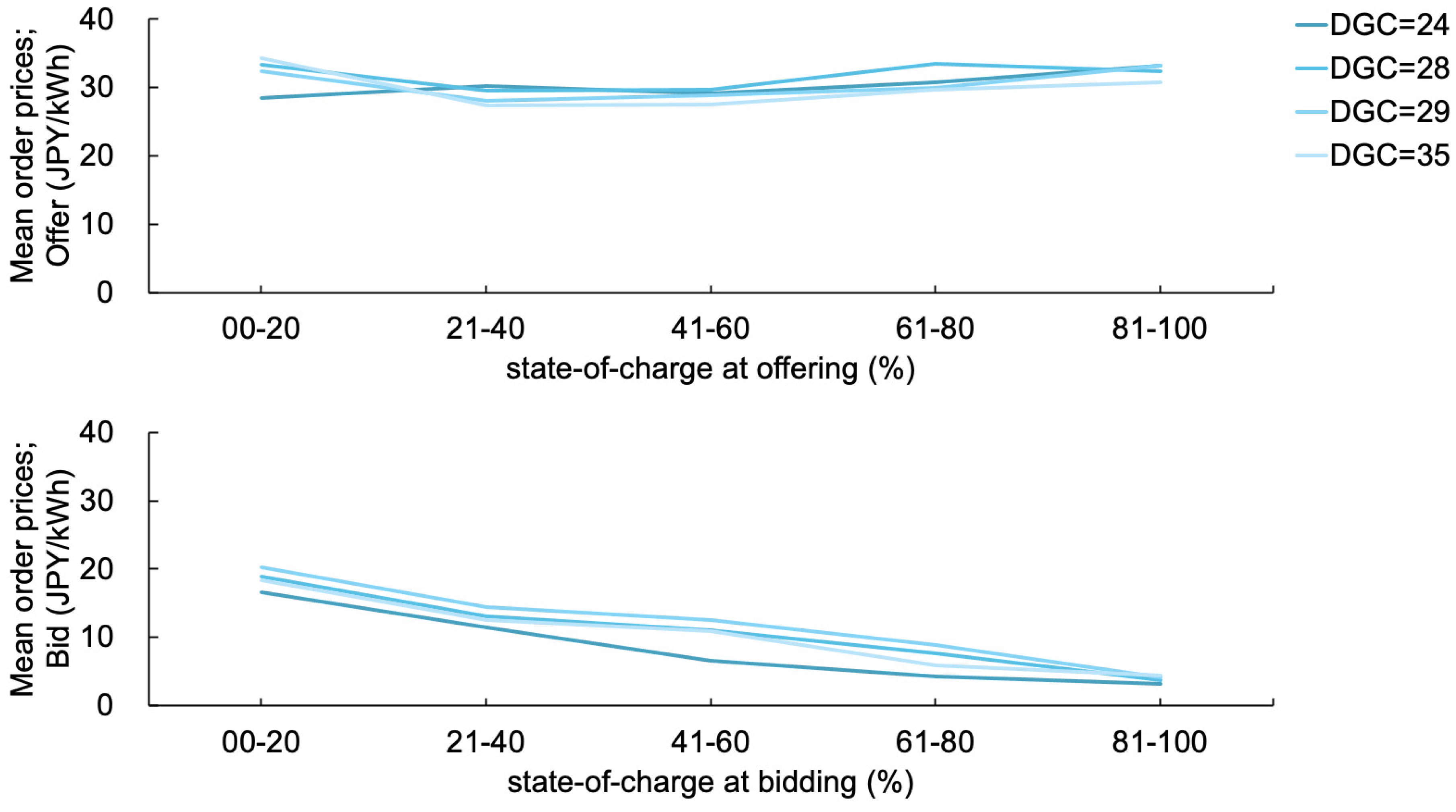
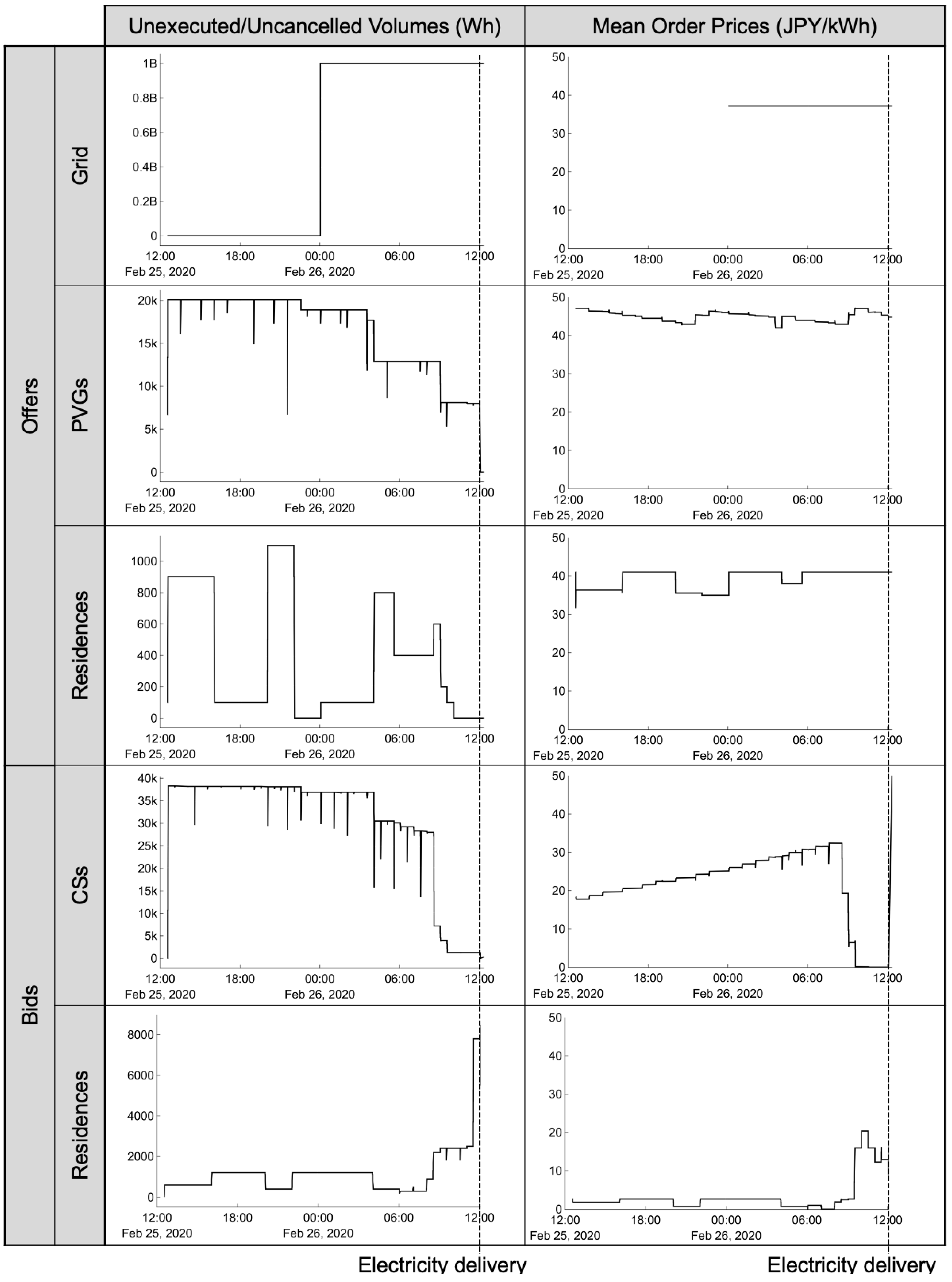
Publisher’s Note: MDPI stays neutral with regard to jurisdictional claims in published maps and institutional affiliations. |
© 2021 by the authors. Licensee MDPI, Basel, Switzerland. This article is an open access article distributed under the terms and conditions of the Creative Commons Attribution (CC BY) license (https://creativecommons.org/licenses/by/4.0/).
Share and Cite
Kontani, R.; Tanaka, K.; Yamada, Y. Feasibility Conditions for Demonstrative Peer-to-Peer Energy Market. Energies 2021, 14, 7418. https://doi.org/10.3390/en14217418
Kontani R, Tanaka K, Yamada Y. Feasibility Conditions for Demonstrative Peer-to-Peer Energy Market. Energies. 2021; 14(21):7418. https://doi.org/10.3390/en14217418
Chicago/Turabian StyleKontani, Reo, Kenji Tanaka, and Yuji Yamada. 2021. "Feasibility Conditions for Demonstrative Peer-to-Peer Energy Market" Energies 14, no. 21: 7418. https://doi.org/10.3390/en14217418
APA StyleKontani, R., Tanaka, K., & Yamada, Y. (2021). Feasibility Conditions for Demonstrative Peer-to-Peer Energy Market. Energies, 14(21), 7418. https://doi.org/10.3390/en14217418





